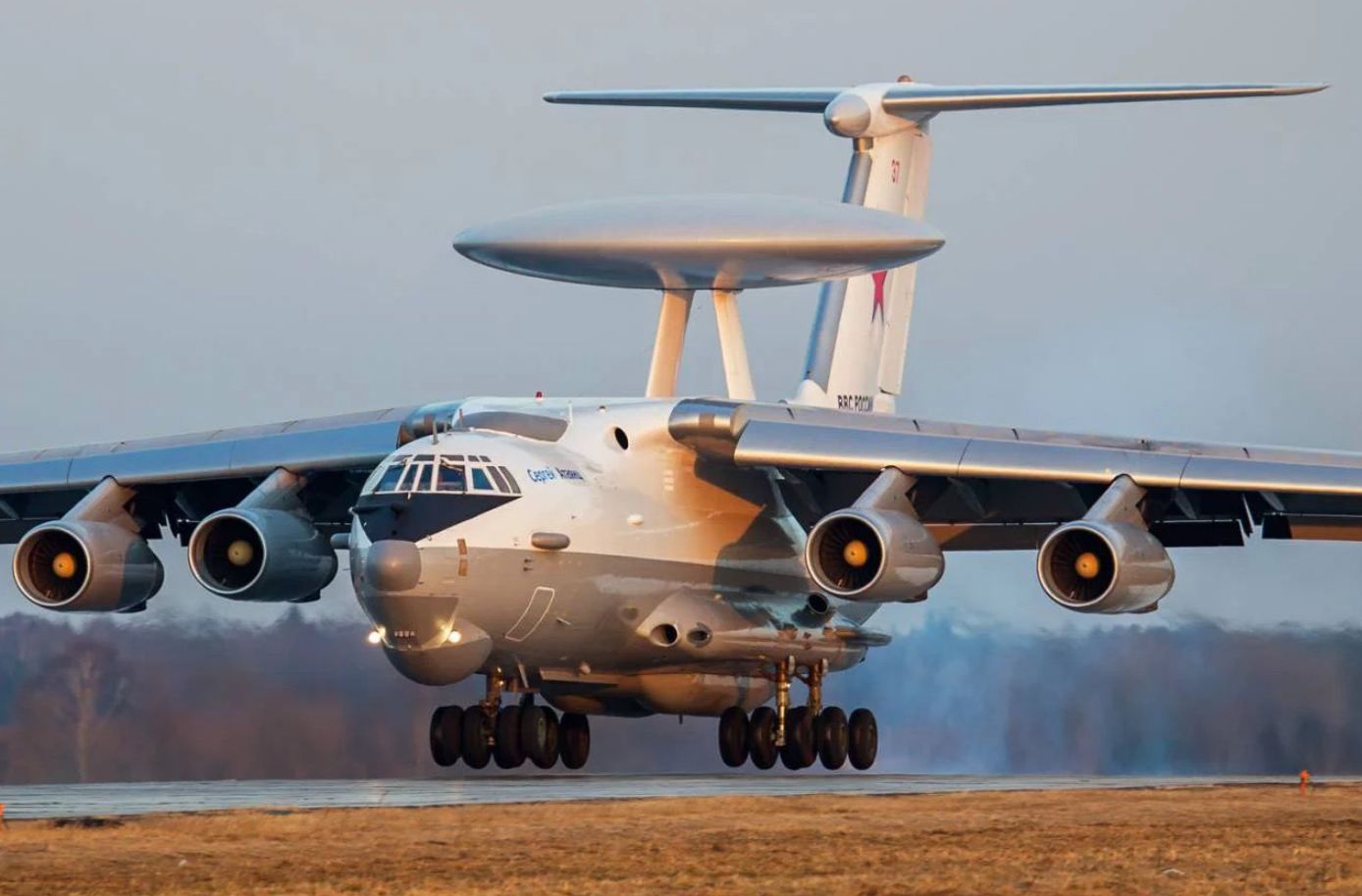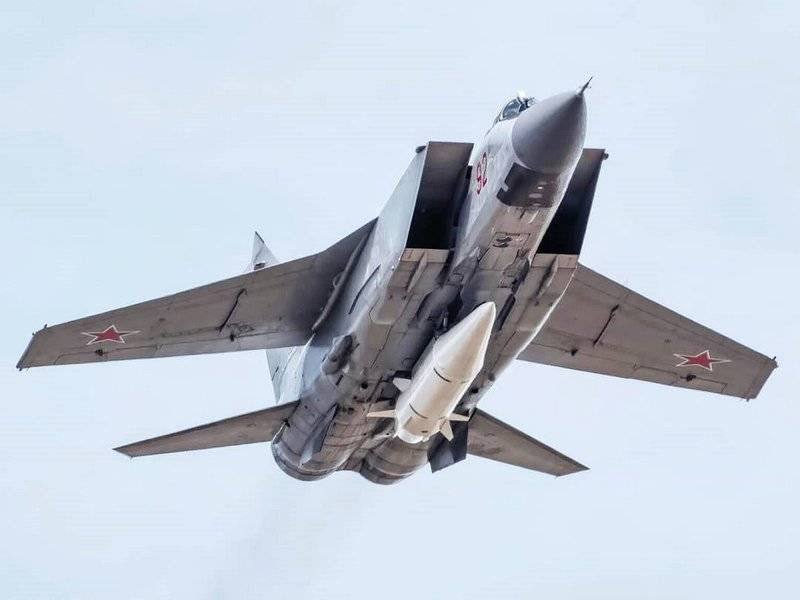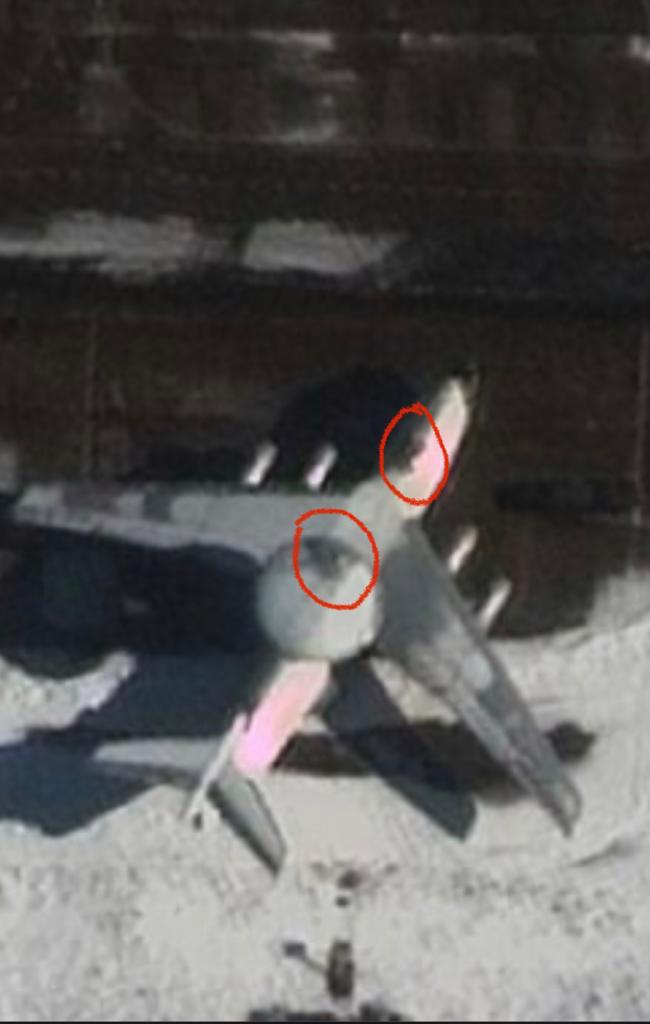A Russian A-50U Airborne Warning and Control System (AWACS) aircraft was attacked by a Belarusian partisan group BYPOL using a drone on February 26. A defense attache to Ukraine from a NATO-member country recently shed light on why the attack on the Russian A-50 was such a big deal.
The Belarusian group used two drones in this attack and claimed to have exploited its large size and damaged the aircraft in several places, including the front and central parts of the plane, avionics, and radar antenna.
Also known by its NATO codename Mainstay, the Russian Aerospace Force (VKS) Beriev A-50U AWACS performs similar roles for the Russian military as the Boeing E-3 Sentry AWACS operated by the US Air Force (USAF) and several allied nations.
Both aircraft are for airborne early warning (AEW) and battle management.
However, in the ongoing conflict between Russia and Ukraine, the A-50U’s primary mission is not much about battle management, as much it is about aiding the most potent weapon in Russia’s arsenal: Kh-47M2 Kinzhal hypersonic air-launched ballistic missile!
The Kh-47 Kinzhal missile is said to have a range of at least 2,000 kilometers. It can carry either a fragmentation warhead weighing approximately 499 kilograms or a 500-kiloton nuclear warhead, which is 33 times more powerful than the atomic bomb used to strike Hiroshima.

The missile can travel 5-12 times the speed of sound and follows a flatter trajectory than a standard ballistic missile, leaving the air defenses with a shorter reaction time. Also, the missile is difficult to intercept because of its ability to maneuver at all stages of its flight path.
The Kh-47M2 Kinzhal made headlines last year after Russia announced on March 19 that it had destroyed a weapons storage depot in the village of Deliatyn in the Ivano-Frankivsk region in western Ukraine using its Kinzhal hypersonic missiles, marking the first-ever use of a hypersonic weapon in combat.
US President Joe Biden, speaking about the missile at a conference with business leaders, said, “it’s almost impossible to stop it.”
The Kinzhal missile is usually deployed from a special variant of the Mikoyan MiG-31 two-seater supersonic interceptor aircraft, designated the MiG-31K.
Biden about "Kinzhal": this is an ordinary rocket, however, it cannot be stopped
A light bulb is the also a pear, but you can’t eat it!
Water is the same as gasoline, but you can’t refuel the car …
? pic.twitter.com/hOQqwNVLVL— Levi (@Levi_godman) March 22, 2022
The MiG-31K has been modified, with all its onboard systems replaced with a new set of hardware to convert it from an air-to-air defense interceptor for the Russian territory into a launch platform for the Kinzhal.
How Does The A-50U Help MiG-31K Fire Kinzhal Missiles Accurately?
The Kinzhal is mainly used for precision strikes against high-value targets, for which it needs an operational set of coordinates. The A-50U comes in with its SATCOM radome, which acts as the primary targeting asset for the MiG-31K.
Together, the MiG-31K and A-50U are said to pose the most indefensible weapon system facing the Ukrainian armed forces.

“Whenever the A-50 is detected as airborne, the air raid sirens sound in the city. No matter where you are, you head for an air raid shelter — and this can be four times or more per day,” a NATO-nation defense attaché on temporary assignment in Kyiv told Breaking Defense earlier this year.
The reason behind this, as the attache explained, is that Ukrainian intelligence had assessed that anytime the A-50 took to the skies, two or more MiG-31Ks accompanied it. There was no way to be sure when these aircraft might launch Kinzhal missiles or if they were undertaking training flights.
Therefore, the A-50 being airborne is of particular concern for the Ukrainian forces, as the specialty of Kinzhal missiles is to strike high-value targets “like command centers or major military installations,” he noted.
“This is what makes the combination of the MiG-31K and the A-50 an existential threat every time they are in the air,” said the attaché.
“This will make any of the A-50s — regardless of where they are based – increasingly a first-order target for either partisan activity or for the increasing capability of the PSU’s fleet of strike drones,” a Ukrainian industry representative, whose company is leading the effort on developing capabilities to hit targets behind Russian lines, was cited as saying by Breaking Defense.
“We have no way of taking down a Kinzhal once launched, so this may be the best way to ensure they are minimally effective against us,” the industry representative explained.
Notably, the attack by BYPOL on the A-50U was focused on the two sensor and radar tracking sections of the aircraft, as claimed by the Belarusian partisan group.
“We note that A-50U is quite a ‘convenient’ target due to its large (more than 10 meters in diameter) fiberglass dome, where a rotating antenna of the Shmel radar system is located,” read the tweet by the Belarusian Hajun Project.
The satellite imagery that emerged shortly after the incident also seemed to confirm these claims, as it showed some shady patches, suggestive of some damage, on the aircraft’s radome.

However, military commentators cautioned against reading too much into these patches, as they could also have been of the snow on the aircraft’s airframe.
Ще одне відео дрона та А-50У в Мачуліщахhttps://t.co/868XBBbQZE pic.twitter.com/kaD11ivwr1
— MilitaryAviationInUa (@Ukraine_AF) March 3, 2023
Also, the video of the attack, assessed to have been shot from two commercially-acquired drones, appears to show these vehicles settling down on the two radar modules of the aircraft more than once, thereby demonstrating how easily this expensive platform could be sabotaged.
The Damage To A-50 Was Not So Severe
According to Belarus Hajun, the A-50 in question (registration number RF-50608) arrived in Belarus on January 3. Before that, the last time it flew to Belarus was on February 24, 2022, when Russia invaded Ukraine.
This is one of the only nine AWACS aircraft in the Russian inventory, making it a highly prized possession for the Russian military. Therefore, many touted the damage to the A-50 as a significant blow to Russia.
The UK Ministry of Defense (MoD) said in an intelligence update on February 28 that “the loss of an A-50 MAINSTAY would be significant as it is critical to Russian air operations for providing an air battlespace picture.”
BYPOL, while taking the credit for the attack, went as far as saying that the aircraft “definitely won’t fly anywhere.”
However, the satellite image that surfaced after the incident suggested that the actual damage, if there was any, was too small to be seen in the commercial satellite imagery, and the aircraft was largely intact, raising questions about the overall severity of the attack.
Maxar has these images of the A-50 AWACs aircraft at the Machulishchy Air Base in Belarus from today. I can’t see any dramatic damage (image: @Maxar) pic.twitter.com/Smm8ULgqkh
— Gianluca Mezzofiore (@GianlucaMezzo) February 28, 2023
The severity of damage was perhaps less because of the insufficient payload capacity of the commercially acquired drones used in the attack to carry enough explosives needed for disabling the aircraft.
Later the same day, a VKS Il-76 (RF-86843) and an An-26 military transport aircraft arrived at the Machulishchy Air Base, where the attack had happened, carrying spare parts for on-site repairs.
On March 2, the aircraft was flown out of Belarus and arrived at the VKS 325th Aviation Repair Plant in Taganrog, probably for a more elaborate re-fit and replacement of any severely damaged aircraft parts.
- Contact the author at tanmaykadam700@gmail.com
- Follow EurAsian Times on Google News




